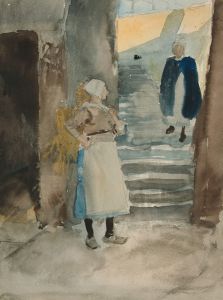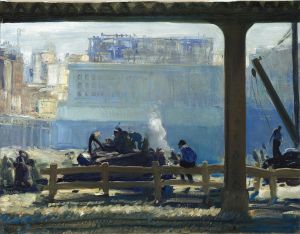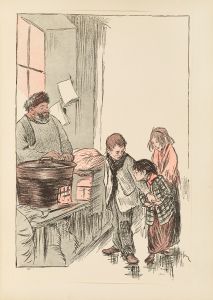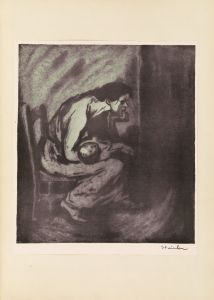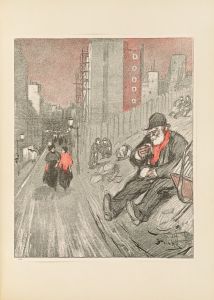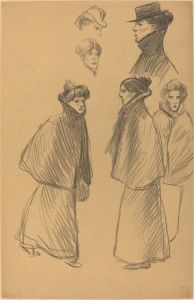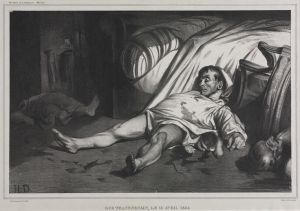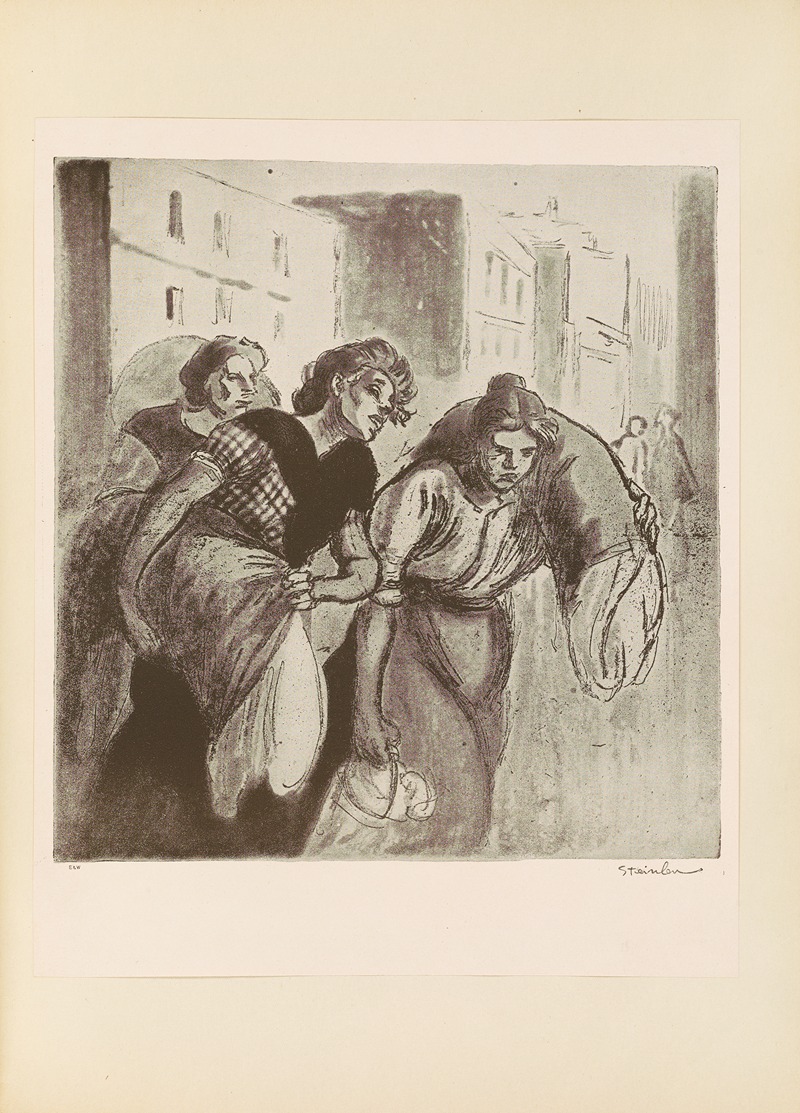
The Return From The Wash-House
A hand-painted replica of Théophile Alexandre Steinlen’s masterpiece The Return From The Wash-House, meticulously crafted by professional artists to capture the true essence of the original. Each piece is created with museum-quality canvas and rare mineral pigments, carefully painted by experienced artists with delicate brushstrokes and rich, layered colors to perfectly recreate the texture of the original artwork. Unlike machine-printed reproductions, this hand-painted version brings the painting to life, infused with the artist’s emotions and skill in every stroke. Whether for personal collection or home decoration, it instantly elevates the artistic atmosphere of any space.
Théophile Alexandre Steinlen was a Swiss-born French artist, best known for his work as a painter and printmaker in the late 19th and early 20th centuries. He was particularly renowned for his contributions to the Art Nouveau movement and his depictions of Parisian life. One of his notable works is "The Return From The Wash-House," which exemplifies his keen observation of everyday life and his ability to capture the essence of the working class in France during that period.
"The Return From The Wash-House" is a painting that reflects Steinlen's interest in social realism and his commitment to portraying the lives of ordinary people. The artwork depicts a scene that was common in the lives of many working-class families in Paris: the return home from the communal wash-house. During Steinlen's time, wash-houses were public facilities where people, particularly women, would go to do their laundry. These places were not only essential for maintaining hygiene but also served as social gathering spots where women could interact and share their daily experiences.
In this painting, Steinlen captures the moment of return, focusing on the figures of women and children as they make their way back home. The composition is characterized by its attention to detail and the use of muted colors, which convey a sense of the everyday and the mundane. Steinlen's use of light and shadow adds depth to the scene, highlighting the physical and emotional labor involved in such routine tasks.
Steinlen's work is often associated with his empathy for the working class and his ability to depict their struggles and joys with dignity and respect. "The Return From The Wash-House" is no exception, as it provides a glimpse into the lives of those who were often overlooked by society. The painting is a testament to Steinlen's skill in capturing the nuances of human expression and his dedication to portraying the realities of life in a rapidly changing world.
Throughout his career, Steinlen was influenced by the social and political climate of his time. He was an active participant in the artistic and intellectual circles of Paris, and his work often reflected his progressive views. His art was not only a reflection of his environment but also a commentary on the social issues of the day, such as poverty, labor rights, and the role of women in society.
Steinlen's ability to convey emotion and narrative through his art made him a prominent figure in the world of illustration and painting. His works were widely published in magazines and journals, and he became well-known for his posters, particularly those featuring the famous cabaret Le Chat Noir. Despite his success, Steinlen remained committed to his roots, often choosing subjects that highlighted the lives of the less fortunate.
"The Return From The Wash-House" is a prime example of Steinlen's dedication to social realism and his ability to capture the essence of everyday life. It stands as a reminder of the artist's talent for storytelling through visual art and his enduring legacy as a chronicler of the human condition.






